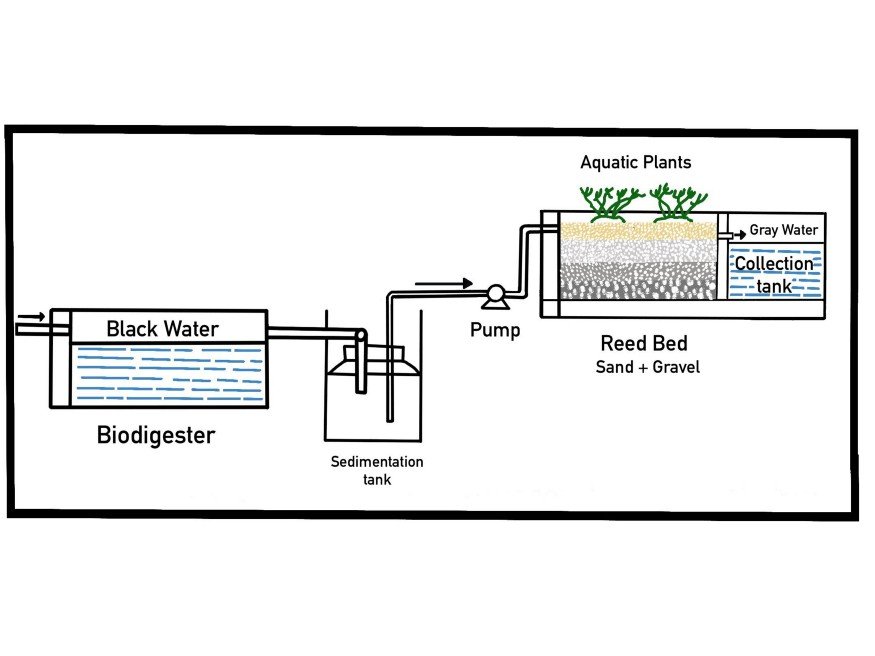
The Science Behind the Bio-Toilet
While the construction of the bio-toilet in Diguvapalem required several weeks of organization and construction, a crucial part of the process was understanding the science behind how the toilet works. In this post, I will explain how exactly the bio-toilet works, the cost of the toilet itself, and the benefits of the system.
There are two main parts of the water treatment system: the biodigester and the reed bed. Black water containing human waste from the toilet is passed into the first part of the system, the biodigester. Here, it undergoes a series of chemical actions to break it down to methane (which can later be used as natural gas), carbon dioxide, and gray water. The water is acted on by a specially curated bacterial inoculum. These bacteria are quite dynamic in the sense that they can handle the extreme cold, allowing the system to be used in rural, high-altitude areas such as in the northeast of India. The bacteria are also anaerobic, meaning that they can survive even with a lack of oxygen.
The gray water from the biodigester is then passed into a reed bed, which is essentially a layer of sand followed by several layers of gravel of increasing size. The surface of the reed bed has three species of plants: cattail, Indian shoot, and lobster-claws. These plants are aquatic, which means they are adept at absorbing pollutants from the gray water. Following the purification of the gray water, it passes out from the reed bed and can then be used for agricultural purposes.
I have also published an article in the Young Scientists Journal (YSJ) explaining in greater detail how the bio-toilet system works, with some interesting diagrams.
The bio-toilet offers a clean, eco-friendly alternative to a conventional toilet and waste management system. The construction of such toilets can have a great impact in rural areas of India, and will hopefully help expand the access to eco-friendly toilets across the country.
